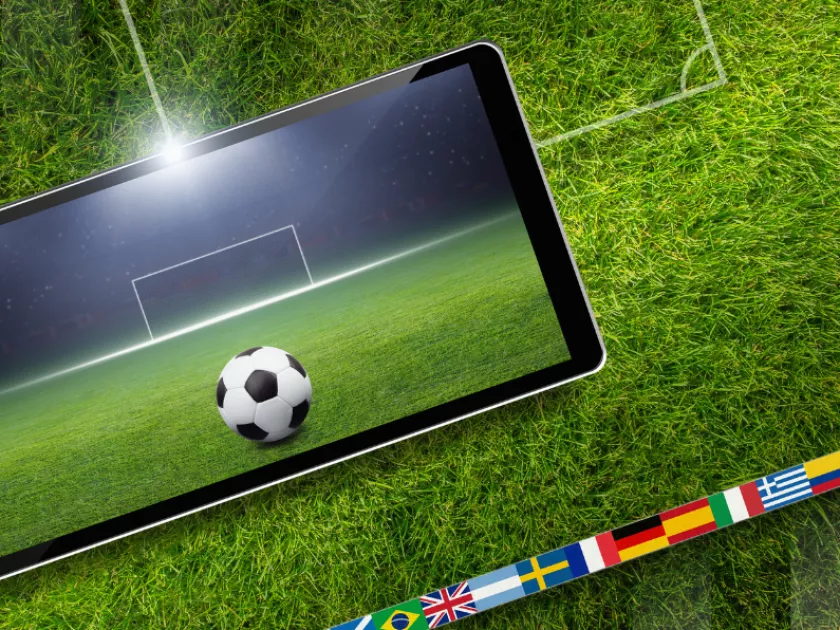What the World Cup meant for broadband networks
It was November 2022 when Qatar suddenly topped the list of the world’s fastest mobile internet speeds. Last year’s FIFA tournament was about sports as well as a necessary democratic debate on human rights in the host country.

However, on a less controversial level, internet geeks might wonder how it impacted broadband networks. Per Ookla, “Qatar rocketed to first place on the Speedtest Global Index with a median download speed of 176.18 Mbps in November 2022”. The country had a good reason for heavily investing in networks: last year’s World Cup has eventually turned into a massive testbed for the future of streaming and network resilience.
Digital natives push viewership up to 5.4 billion people
According to recent estimates, a cumulative 5.4 billion people watched the 2022 tournament, up from 2.3 billion in 2018. If we look at the finals alone, Argentina vs. France was watched by 242.8 million viewers in 2022, up from 154.8 million in 2018 with France vs. Croatia.
Per Sandvine’s Global Internet Report 2023, the numbers have been supercharged by “younger, more digitally native audiences craving new experiences and formats”. Effectively – the report continues – this has created a new frontier to test how apps and streaming services will provide user engagement with content in the future.
Data traffic: what a difference a “goal” makes
The world of streaming is changing fast and, to put it in the words Barron’s analysts, tech companies are now “piling into live sports”. Effectively, this constitutes major competitive pressure on broadcasters and existing VOD players. From the NFL to football, the likes of Amazon, Apple and others in big tech are rushing to monetize new ways to access sports. While broadcasting companies go multi-channel with different technologies and across platforms, global tech companies are competing by going via broadband networks only – which has a huge impact in terms of concentration of traffic loads. This is particularly true if we think that local telecom operators tend to enter into mutually beneficial relationships with VOD players, while the commercial relationship can be imbalanced when on the other side of the equation there is a global tech giant.
No matter what the relationships, the World Cup was a massive test case for the future of streaming. Sandvine’s latest report shows at least 3 interesting data points:
After the kickoff, EU bandwidth volumes more than doubled, reaching almost 240GB;
Looking at a case study, the report found that “one major operator in EMEA experienced 7x normal traffic from end of November to beginning of December”;
Also, digital engagement seemed to be triggered by goals: “a North American Cable Operator sees traffic steadily climb in each 10-minutes increments of the Argentina-France final”.
What this means for a telecom operator is that you get an overall increase of traffic on your networks, of course. But also that you get fast traffic spikes that – because of their nature – cannot be fully foreseen.
In some cases, sport events even require ad hoc telecom investment. During the 2020 UEFA championship, for example, NTT deployed network elements conceived specifically for the occasion, including 87km of fibre optic cables and 1.565 access points.
Streaming is king – and app complexity is increasing
The figures outlined above mean that consumer habits are changing and that trends show content consumption will more and more move over the internet.
Sandvine shows us that, in the US, the 2022 World Cup case study resulted in a 158% increase in streaming compared to the 2018 tournament. Similarly, figures also show that in Spain, France and the UK one-third to one-half of the total 2022 viewership was online, as opposed to traditional TV.
The case study also showed how user engagement stretched across platforms and applications. This connects to another crucial finding of Sandvine’s 2023 report: app complexity is increasing. Each app is no longer dealing with just one type of traffic, but with different types within the same app. For example, a single messaging app can today include chatting, calling, gaming and video sharing at the same time.
Handling such complexity from a telecom operator’s viewpoint is not easy. On the one hand, user require a high quality experience. Despite an extremely limited ability to reflect this in market prices, especially in very regulated markets such as the EU, telcos must meet such demand. On the other hand, however, increased demand means more telecom investment, which is eventually monetized mainly by tech companies.
What’s next? EU policies, market trends
The World Cup is an interesting case study for all those following the on-going EU debate the relationship between big tech and the telecom sector. How will traffic volumes evolve as tech giants fiercely compete against traditional broadcasters? Which network characteristics will this require? Who invests? Who extracts value from such investment? How do we keep internet bills affordable for users, while providing top quality of experience for all?
This, ultimately, has a lot to do with the very future of the telecom sector as well as the quality of service that users will get. Which is why, the EU consultation on whether big tech should pay a “fair contribution” to network investment is now linked to a reflection on the future of telecoms and new technology trends. As the age of the metaverse approaches, the average user is expected to require “five to 40 times more data than it takes to stream an HD video”. It is only fair to discuss the policy implications of today’s streaming realities as well as tomorrow’s metaverse trends: looking at the rear window is no sustainable option.
